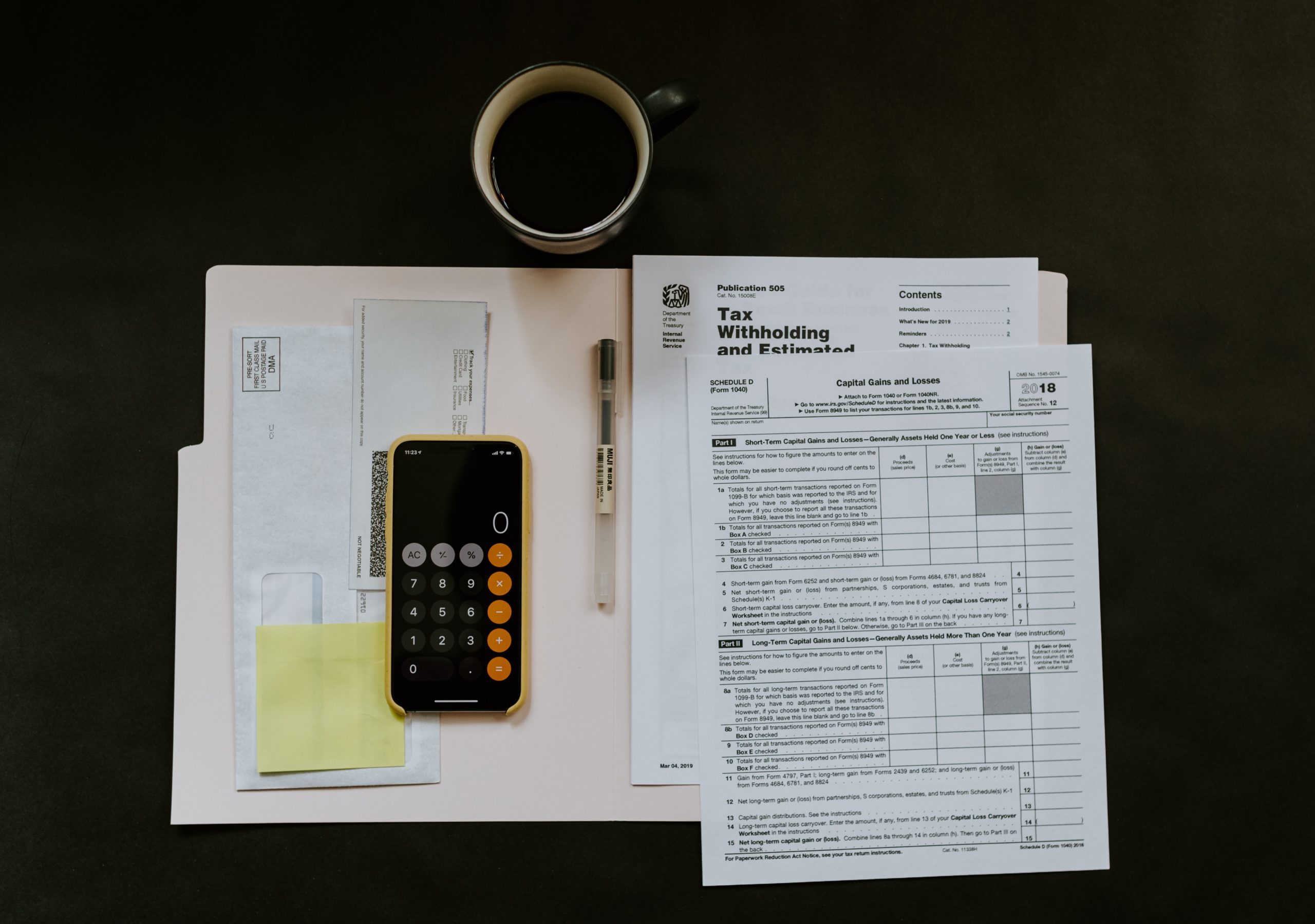

Quick Links
Quick Links
With the rapid development of information technology, traditional labor relations have changed as well. More and more people are choosing freelance.
But what about freelancer tax obligations? All independent contractors, small-business owners, and freelancers in the USA have to pay taxes.
If you are working for yourself, you pay income tax and self-employment tax. Keep reading to learn how it works and what exactly you need to pay.
What Is Self-Employed (SE) Tax and Income Tax?
As a freelancer, you’ve probably noticed that there is no income tax taken out of your paychecks.
As a result, you will need to pay self-employed (SE) tax.
This tax will be 15.3% of your income.
The SE tax consists of two payments: 12.4% goes to Social Security funds, and 2.9% covers Medicare insurance.
The second payout for the self-employed is the federal income tax. It makes up from 10 to 40% of the profit. The amount depends on profit.
Those whose annual income does not exceed the tax-free minimum income of 10 thousand dollars pay the least; and self-employed with an income of more than 414 thousand dollars a year pay the highest rate.
Who Is to Pay SE Tax?
Not only business owners are qualified for this tax. All independent contractors, sole proprietors, and freelancers must file for self-employment tax.
“Taxes for freelance allow self-employed individuals to make the same contributions and enjoy the same benefits as permanently employed people”, believe Ivory Research contactors.
How to define who is considered to be self-employed and needs to pay this tax?
The Internal Revenue Service explains it as follows:
- A person is an independent contractor or a sole proprietor;
- A person is a partner in a business or some trading activity;
- A person is engaged in business activity (working for himself or part-time).
- A person earned more than $400 from self-employment services.
Freelancers must be ready to pay SE tax even if they are a U.S. citizen who works for a different country.
If a freelancer combines a full-time job with freelance work, they also need to pay SE tax on the net earnings through freelance activity unless it is less than $400.
The government applies self-employment tax regardless of the age of the taxpayer.
How Much Will You Have to Pay?
The starting point is to calculate net earnings from freelance activity during the year. In other words, it is the gross income without the business expenses.
Roughly, 92.35% of the net income will be taxed. After you get the amount of the net earnings, calculate 15.3% of it.
In 2020, only the first $137,700 is subject to the Social Security portion of SE tax.
In case your income was very low, or if you had a loss, use IRS Schedule SE for precise calculations.
The Rate of Self-Employment Tax
As it has already been mentioned each freelancer pays 15.3% tax of net profit. How does it differ from the taxes a permanent company employee pays?
- The main difference between SE tax and the payroll taxes salaried individuals pay is that usually employees and their employers share the bill on Social Security and Medicare (i.e., the employer covers 7.65% and the remaining 7.65% is paid by the employee). Freelancers pay all of 15.3% on their own.
- In 2019, Social Security payment was calculated from the first $132,900 of earnings.
- This year, this sum was increased to $137,700.
- You may need to pay 0.9% additional Medicare tax in case your freelance net earnings are over $200,000.
When to Pay Taxes?
If your income is the result of self-employment activity and your tax will be over $1000 during the year, you will have to pay the estimated tax.
These payments are due every 3 months in equal portions.
In 2020, the coronavirus pandemic heavily affected the everyday routine of everyone, and consequently the tax payment dates shifted as well:
| Payment | When income was earned | Date |
| 1st payment | January 1 to March 31 | July 15, 2020 |
| 2nd payment | April 1 to May 31 | July 15, 2020 |
| 3rd payment | June 1 to August 31 | September 15, 2020 |
| 4th payment | September 1 to December 31 | January 15, 2021 |
If you did not receive any income during the specified period, you do not need to pay estimated tax for that period.
The easiest way to determine your estimated tax time and its amount is to use Form 1040-ES.
Note, if you owe more than $1000 of tax and delay the payments, you may face penalties in the end.
Tax Deductions for Self-Employed
Of course, the SE tax rate is rather a burden for all people earning their living with freelance. But there is also a sweet bonus for all self-employed taxpayers in the system. They are given the opportunity to subtract half of the SE tax from their total income.
For example, if your Schedule SE shows $3000 of SE tax for a year, you will need to pay this amount, but at tax time you will be still able to deduct $1500 on your 1040. If you are employed by a company, the W-2 form tells you about all the deductions that can be made to your taxes. But with a 1099 form, you have no idea what deductions you can claim.
What Benefits Can You Get From Your Self-Employment Tax?
- Mileage or vehicle expenses. It is allowed to deduct operating costs for using transport means for your business. For 2020, the IRS set up a standard mileage rate – 57.5 cents per mile. But you have to keep records of the date, covered distance and purpose of each trip. These documents are vital as the IRS may initiate the audit to prove these expenses.
- Retirement savings. This deduction is very important. All taxpayers under 50 years old can deduct up to $6.500 in contributions made to an individual retirement account in 2020.
- Insurance premiums. This deduction works in the case when you bought policies on your own for you and your family members. It is also limited to the costs that exceeded 7.5% of your gross income. So if your gross income is $120.000, the first $9.000 cannot be deducted.
- Home office expenses. It is a big deduction you can capitalize on if you use at least 10% of your home premises for your business. You can even include here utilities, property insurance, and taxes. For example, your office area takes 20% of the whole home space. In this case, you can claim 20% of your home expenses to be deducted from the SE tax. Use this link to make accurate calculations.
- Credit card and loan interest. If you have taken a business loan from the bank, then interest is also tax-deductible. But you have to be ready to prove that you have used the money for business development and needs.
- Phone and internet costs. Even if you use your home phone for business, you may still add the costs to the deductions. But you will have to deduct only expenses directly related to your work.
- Business travel and meals. If you are travelling on business or have to organize a business lunch with your clients, part of these expenses can be also submitted for a deduction. Such expenses are always being thoroughly checked. So you need to prove with records and bills that they had a business background.
- Start-up costs. It is possible to deduct up to $5.000 in business start-up costs. Here we talk about marketing research for launching a new business, attorney, and accountant fees. But you will not be able to deduct such expenses as equipment purchases and vehicles.
- Continuing education. Note, that you can deduct costs only for education that is directly related to your current business activity. Read IRS Publication 970 to learn all the requirements.
- Advertising. You may use Facebook, Google, and other social media channels to promote your business. These expenses are also tax-deductible.
- Self-employment taxes. It is a pass-through deduction that allows most taxpayers to deduct 20% of their income.
Electronic Service and Responsibility of the Payer
In the United States, all taxpayers have access to an electronic service on the tax authorities’ website. It was introduced to simplify the procedure for tax payments.
Overall, the main strategic goal of the e-service is to dramatically reduce misunderstandings and arguments with the tax authorities, ensure full clarity and payment of tax liabilities, and reduce the number of inspections.
Tax payers are registered on the website of the tax authorities using a code (Taxes Identification Number) and a password (Web file number). With the help of an electronic service, the payer submits, clarifies any report queries, and pays taxes from any location via the Internet.
The payer also has permanent access to their data (in particular, to the personal account card). Besides, when filling out tax returns on the website of the tax authorities, the taxpayer automatically receives tips on the correctness of filling.
If a taxpayer provides inaccurate information more than once, the tax authorities may block that taxpayer’s access to the site.
Filing a Self-Employment Tax
Each freelancer can calculate his net SE tax using Schedule C or Form 1040.
At first, with the help of Schedule C, you will calculate the result of your business activity, i.e. profit or loss.
After it, you have to use the result you have got in Form 1040. This procedure will show how much you need to pay on certain dates during the year.
Besides submitting an annual tax rerun, all self-employed people have to make quarterly tax payments. As freelancers have no employer, they have to use estimated tax.
These quarterly payments are calculated according to Form 1040-ES (Estimated Tax for Individuals). You will also need your annual tax return information from the previous year to submit the correct data. As a result, you will learn if you have to pay tax every three months.
Quarterly payments can be settled through the Electronic Federal Tax Payment System or Form 1040-ES can be mailed.
In 2020, the first term for estimated tax payment was extended from April to July 15, 2020, as a result of the coronavirus pandemic.
Summing up all the above information, you can start a legal path in the world of freelance and work with large customers and serious projects without fear of a sudden tax audit or attention from the Internal Revenue Service.
Wrapping Up
A good suggestion to all freelancers is to set aside some amount from the income for taxes. It is recommended to save 25-30% of each check.
You may open a separate savings account which would help you avoid penalties for underpayments. If you’re still unsure and have some questions on the best way to go about filing, we’d recommend working with a professional accountant to help make the process as smooth as possible.

